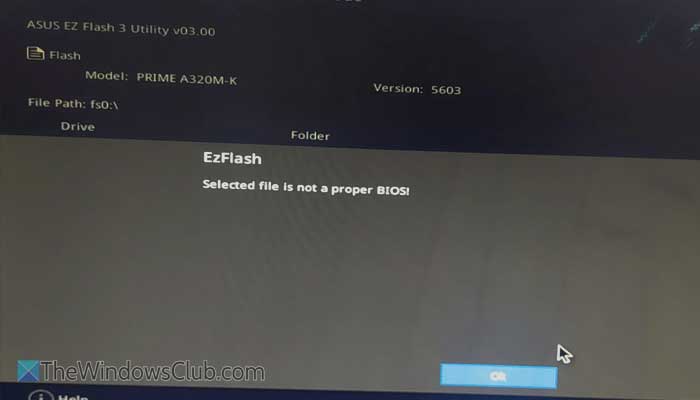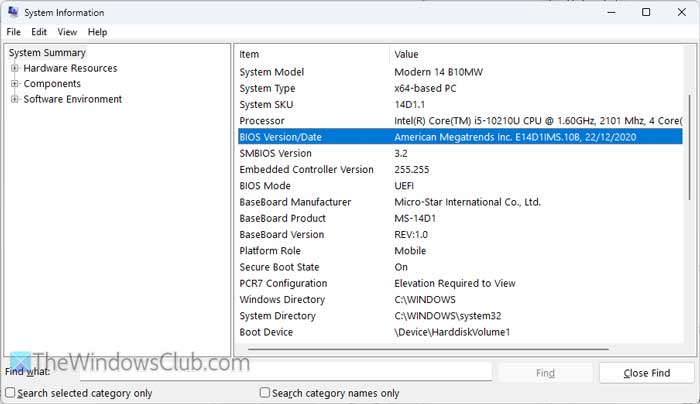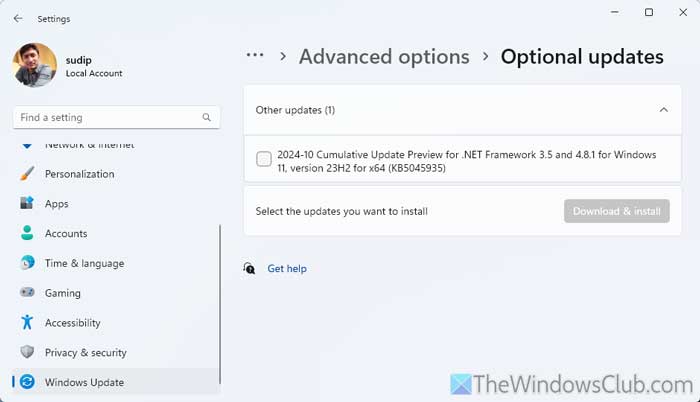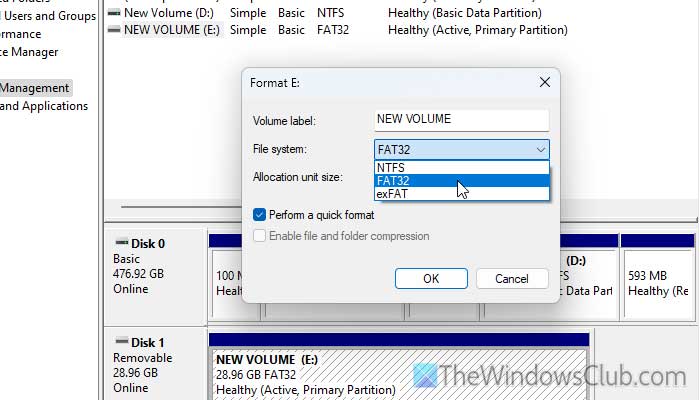When updating the BIOS framework, if you see an error message saying the Selected file is not a proper BIOS, on your ASUS, Dell, etc. computer, here is how you can fix the problem. Here, we have consolidated the most common reasons why you might encounter this error, along with some solutions so that you can fix the issue and update the BIOS without any problem.

Fix Selected file is not a proper BIOS
To fix the Selected file is not a proper BIOS error on your ASUS, Dell, etc. computer, follow these solutions:
- Verify existing BIOS version
- Verify the file for corruption
- Update outdated drivers
- Verify external drive
To learn more about these solutions, continue reading.
1] Verify existing BIOS version

It is very important to verify the existing BIOS version first. Let’s assume that you have the latest version, and you are still trying to update it without knowing about the version. In that case, updating it to another version is impossible when you already have it. To check the existing BIOS version, follow these steps:
- Search for “system information” in the Taskbar search box.
- Click on the individual search result.
- Find the BIOS Version/Date.
After that, check the downloaded file or the website from where you downloaded the framework. If both are the same, you cannot do anything.
2] Verify the file for corruption
It is likely that the BIOS file that you have downloaded may have become corrupt. If your computer was recently attacked by malware, file corruption is also possible.
The BIOS framework cannot be damaged in any way if it is to be installed or updated. If you think that the BIOS file is corrupt, it is recommended that you re-download it. You should download the correct BIOS file from the official website of your motherboard manufacturer.
3] Update outdated drivers

If you have outdated drivers, your computer may experience the aforementioned problem. That is why it is suggested that you update all outdated drivers before going through the BIOS update process. You can open the Device Manager to find the installed drivers.
Then, you have two options. First, you can visit the official website of that hardware and check if there is any newer version of the driver. Second, you can use the Windows Settings panel. For that, do the following:
- Press Win+I to open the Windows Settings panel.
- Go to Windows Update > Advanced options > Optional updates.
- Expand the Other updates section.
- Tick the checkbox and click the Download & install button.
Once done, you can go through the same steps to update the BIOS framework.
4] Verify external drive

Creating a bootable USB is the easiest way to update the BIOS, and the vast majority of people use that method. However, there are a few things you need to keep in mind while using the USB drive. The most important thing is to have the USB drive in FAT32 format.
If you have formatted the drive in any other format, you might be able to create the bootable drive, but it won’t work. To format the USB drive in FAT32 format, you can follow these steps:
- Plug in the external USB drive.
- Open the File Explorer and go to This PC.
- Right-click on the external drive and select Format.
- Expand the File system drop-down menu and choose the FAT32 option.
- Click the Start button.
- Let it be finished.
However, another method exists to format the USB drive in FAT32 format. You can use the Disk Management panel to get the job done. For that, follow these steps:
- Open File Explorer and right-click on This PC.
- Select Show more options and choose Manage.
- Click on the Disk Management option.
- Right-click on the external drive and choose Format.
- Select the FAT32 option from the File system menu.
- Click the OK button.
Once done, you can create a bootable USB drive.
You can also run the CHKDSK on the external drive. At times, the external drive may have internal problems, and running the CHKDSK can fix that issue.
I hope these solutions work for you.
Read: USB won’t format to FAT32 on Windows 11
How to fix Selected file is not a proper BIOS on ASUS?
To fix the Selected file is not a proper BIOS error on ASUS computers, you need to first format the external USB drive in FAT32 format to create the bootable media. Then, if the file is corrupted, you should re-download the update file. Finally, you can update all the outdated drivers and run the CHKDSK.
How do I update the BIOS on my ASUS motherboard?
ASUS offers an official tool called ASUS BIOS Update Utility, which you can download from the official website. It can help you find the version of the existing BIOS and check for an update. If so, you can choose the update to download and install.
Leave a Reply